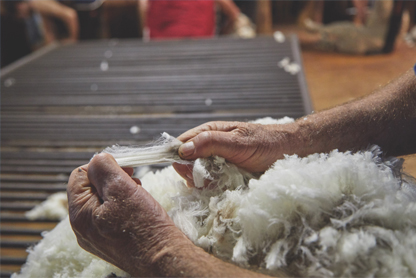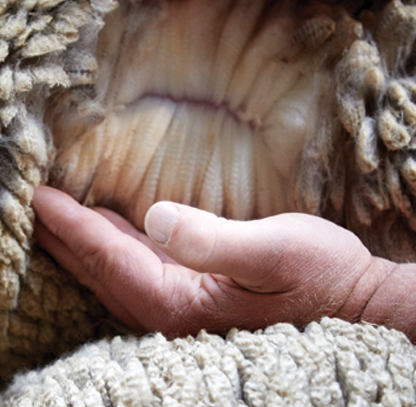The sheep louse Bovicola ovis continues to be a problematic pest in sheep in Australia. It is found in all sheep producing regions with its nationwide prevalence being estimated between 20-25%. The louse lives on the surface of sheep, feeding on surface skin cells and causing irritation. Itching sheep damage the fleece through scratching which has an impact on wool quality and quantity.
The female lice lay an egg every 2-3 days which will hatch out in around 10 days, and develop into an adult louse over a period of 35 days. The lice spend their entire life on the sheep.
The main method of transfer of lice is through close contact of sheep which enables the louse to crawl up the fibre on one animal, and on to the fibre of another. Activities that can result in contracting lice includes the mixing of lice infested sheep through poor fencing and strays, also during transport or yarding when mixed with affected sheep.
Lice spread through a flock by close contact which can occur when congregating at watering points or being hand fed, in sheep camps, and during mustering and yarding. Lice infestations build up slowly due to the slow reproduction of the females. Studies have demonstrated that it takes an average of 5 months from the time of the first louse infesting a sheep, to see visible signs of pulled wool. The lice eggs are small and difficult to see, especially when in very small numbers. Visual inspection for lice detects moderate to heavy infestations, but is not very sensitive for early detection.
References:
James, P.J., Bartholomaeus, F.W. and Karlsson, L.J.E. (2007). Temporal relationship between infestation with lice (Bovicola ovis Schrank) and the development of pruritic behaviour and fleece derangement in sheep. Veterinary Parasitology 149, 251-257.
LiceBoss Website, “Biology of lice” and “Economic effects of lice”, http://www.liceboss.com.au/, accessed 23/07/2019.
Niven, D.R. and Pritchard, D.A. (1985). Effects of control of the sheep body louse (Damalinia ovis) on wool production and quality. Australian Journal of Experimental Agriculture 25, 27-31.
Wilkinson, F.C., de Chaneet, G.C. and Beetson, B.R. (1982). Growth of populations of lice, Damalinia ovis, on sheep and their effects on production and processing performance of wool. Veterinary Parasitology 9, 243-252.

